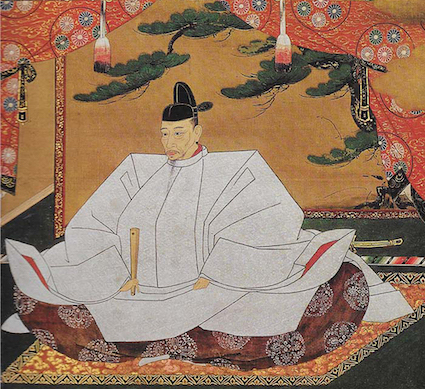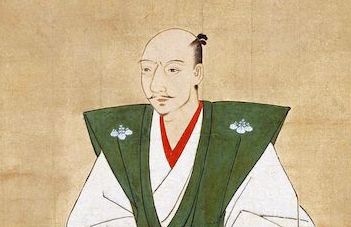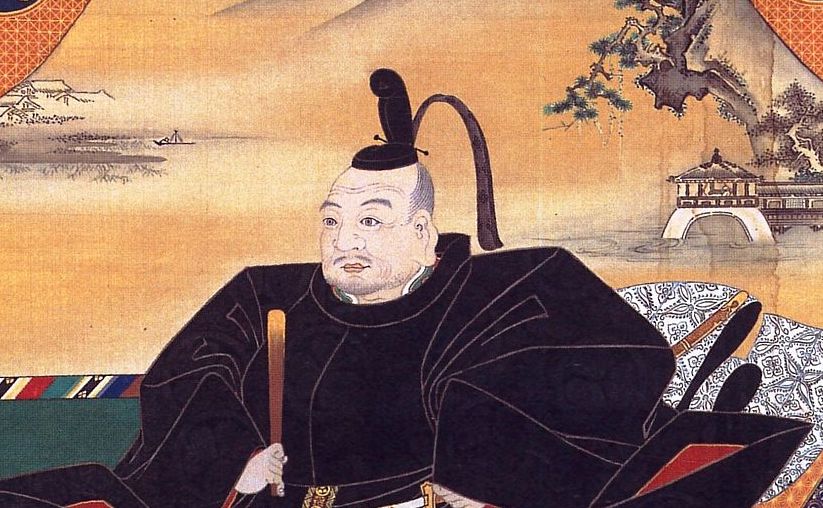
英語で説明する【織田信長】 に続き、今回は安土桃山時代の武将、豊臣秀吉を英語で簡単に説明する表現をご紹介していきます。
ご興味のある方は、当サイトで 英語クイズ(5000問) を出題しておりますので是非ご覧ください。
目次

概要
Toyotomi Hideyoshi was a daimyo (Japanese lord) who lived in the age of civil wars and completed the work of national unification begun by Oda Nobunaga in 1590.
(豊臣秀吉は、戦国時代を生きた武将で、織田信長によって始められた天下統一を1590年に成し遂げました。)
He killed Akechi Mitsuhide, and took revenge on his lord Oda Nobunaga and unified Japan.
(彼は明智光秀を討って主君織田信長の仇をとり、天下を統一しました。)
信長の後継者へ
He was born in 1537 in the Nakamura village in Owari Province (Aichi prefecture), started his service to Oda Nobunaga as a shoe caretaker, and distinguished himself gradually.
(彼は1537年、愛知県の尾張国中村郷に生まれ、草履取りとして織田信長に仕え始めてから次第に名を馳せていきました。)
Mere eleven days after Nobunaga was killed by Akechi Mitsuhide in the incident at Honno-ji Temple, Hideyoshi first destroyed Mitsuhide at the Battle of Yamazaki.
(信長が明智光秀に討たれた本能寺の変のわずか11日後に、まず秀吉は山崎の戦いで光秀を滅ぼしました。)
Later, he defeated Shibata Katsuie, who was in conflict with him, for the right to be Nobunaga’s successor.
(その後、信長の後継者をめぐって対立した柴田勝家を破りました。)
In 1584, Hideyoshi battled with Tokugawa Ieyasu, who was allied with Nobukatsu, the second son of Nobunaga, in the Battle of Komaki and Nagakute and made Ieyasu obey him.
(1584年、信長の次男信雄と手を組んだ徳川家康と小牧・長久手で戦い、自分に従わせることに成功しました。)
Thus, Hideyoshi effectively acquired the position of successor to Nobunaga.
(こうして、秀吉は事実上信長の後継者の座を手に入れました。)
・province:❶(行政区画としての) 州、省 ❷(昔の日本の) 国 ❸(学問・活動などの) 専門分野
・distinguish oneself:頭角を現す、名を上げる
・mere:(名詞の前で) ほんの、単なる、〜にすぎない
・ally:【名詞】❶(戦争における) 同盟国 ❷協力者、味方 /【自動詞】(with, to) 〜と同盟する、協力する
・obey:(命令・指示などに) 従う、(規則などを) 守る、(良心などに) 従って行動する
・acquire:(かたく) ❶(財産・権利・資格などを) 得る ❷(知識・技術・習慣などを) 身につける
天下統一
Furthermore, he built Osaka-jo Castle as his base and was assigned as Kanpaku Daijo-daijin (the Chief Adviser to the Emperor) by the Imperial Court in 1586.
(さらに、大阪城を建設して自分の本拠地とし、1586年に朝廷から関白・太政大臣に任命されました。)
In 1590, Hideyoshi attacked the Hōjō clan of Odawara and subdued the Date family in the Tohoku area.
(1590年、秀吉は小田原の北条氏を攻撃し、東北の伊達家を制圧しました。)
Hideyoshi further subjugated the daimyo throughout Japan, finally putting an end to the warring states period and he unified Japan.
(さらに全国の大名を討伐し、ついに戦国時代に幕を閉じて日本を統一しました。)
After the unification of Japan, he carried out Taiko-kenchi (nationwide survey of lands and their productive capacity), abolished a checkpoint, and conducted Katana-gari (confiscation of weapons).
(天下統一後、秀吉は太閤検地、関所の廃止、刀狩を行いました。)
These drastic reforms contributed to the foundation of a centralized state.
(これらが中央集権国家の形成に寄与しました。)
Having taken control of Japan, Hideyoshi then turned his eyes abroad, toward the Korean Peninsula and even China.
(支配力を手に入れた秀吉は、朝鮮半島、そして中国にまで目を向けました。)
In 1597, Hideyoshi staged a second invasion of Korea, which led to his downfall, and he died at the age of 62.
(1597年、2度の朝鮮侵攻を行いましたが失敗し、62歳で亡くなりました。)
・be assigned:❶(部署・部隊・地位などに) 任命される、派遣される、命じられる ❷(時・場所・任務などを) 割り当てられる
・subdue:❶(軍隊・警察などが、暴徒・反乱などを) 鎮圧する、制圧する ❷(感情などを) 抑える
・subjugate:征服する、服従させる
・abolish:(人・機関が、正式に制度・慣習・規則を) 廃止する、撤廃する
・contribute:(時間・援助・お金などを) 提供する、(団体・事業などに) 貢献する、寄与する
・invasion:❶侵入、侵略 ❷(人・物などの) 殺到 ❸(権利などの) 侵害
ホトトギスの例え
信長、秀吉、家康のそれぞれの性格を表して、「ホトトギスが鳴かなかったらどうするか」という有名な俳句があります。
The three most powerful warlords of the Sengoku period, Oda Nobunaga, Toyotomi Hideyoshi and Tokugawa Ieyasu, all had very different characters.
(戦国時代の最も強力な3人の武将、織田信長、豊臣秀吉そして徳川家康は皆全く異なる性格を持っていました。)
Their personalities are contrasted by the following parable.
(彼らの性格は、以下の例えで対照をなしています。)
◆ Oda Nobunaga
If a bird doesn’t sing, kill it.
(鳴かぬなら 殺してしまえ ホトトギス)
◆ Toyotomi Hideyoshi
If a bird doesn’t sing, make it.
(鳴かぬなら 鳴かせて見せよう ホトトギス)
◆ Tokugawa Ieyasu
If a bird doesn’t sing, wait for it.
(鳴かぬなら 鳴くまで待とう ホトトギス)




